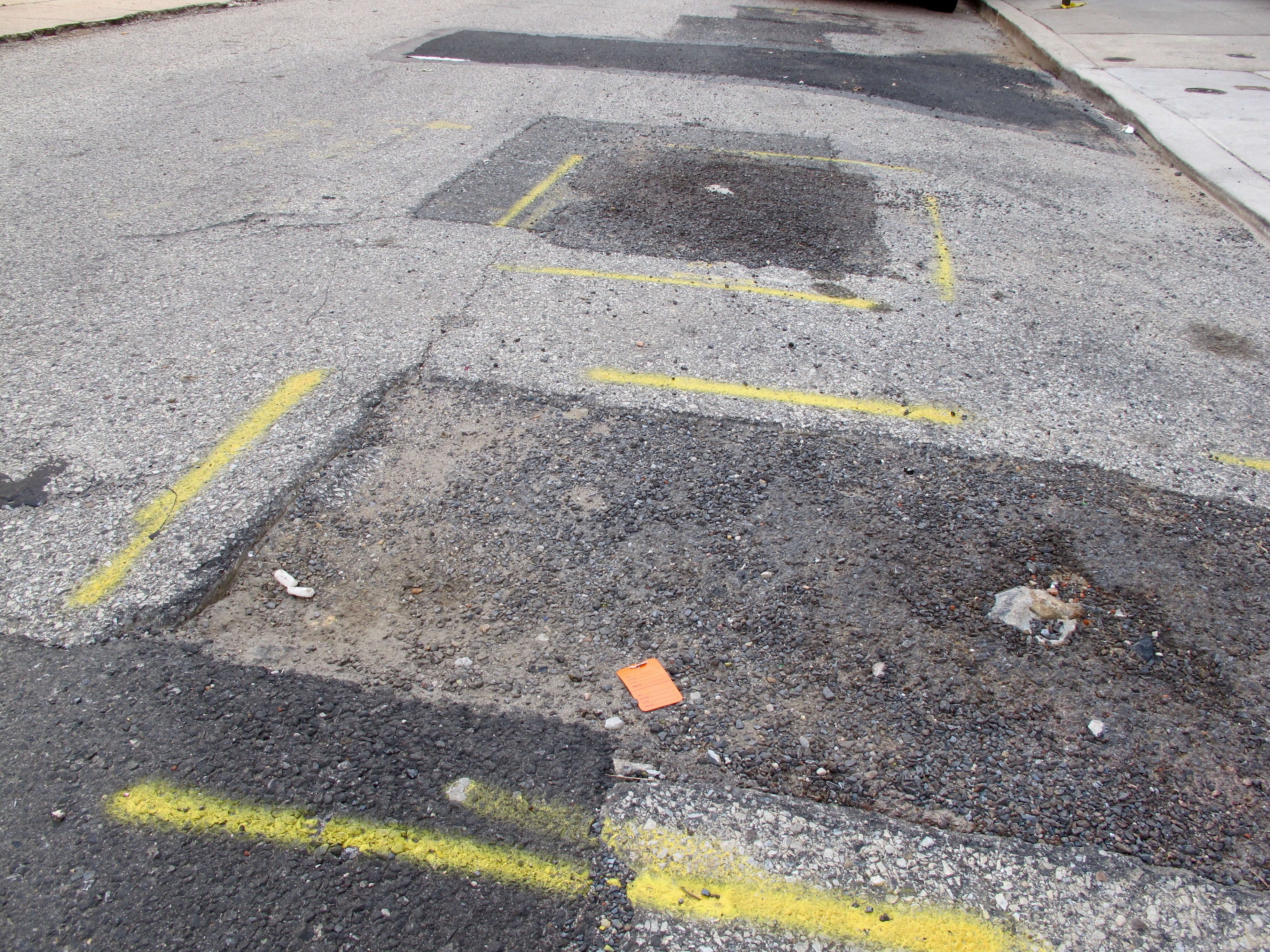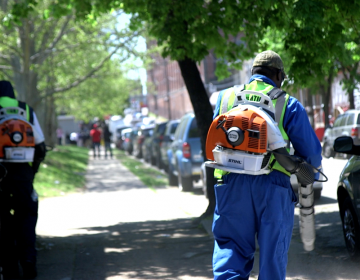They’re just like you: Council gripes about potholes, but Philly streets may start looking better soon

Today, for nearly two hours, City Council grilled the lone witness testifying before the Streets and Services Committee. Councilman Al Taubenberger pressed on technical intricacies and questioning outcomes across in a handful of hypothetical streetscape scenarios. Councilman David Oh relied on his legal training, employing Socratic Method in attempt to lure the city employee into a damning admission.
The topic? Potholes.
The Streets and Services Committee held hearings Wednesday morning on a number of quotidian bills involving tweaks to the street grid and parking regulations on specific streets, but it saved the best for last: a hearing on Philadelphia’s pernicious, “perennial pothole problem.”
The Philadelphia Streets Department has filled more than 27,000 potholes this year, said Steve Lorenz, Chief Highway Engineer at Streets and the hearing’s lone witness. It’s on pace for somewhere between 29,000 to 30,000 for the year. Lorenz said that the Streets crews manage to fill around 85 percent of potholes reported within three days, the city’s stated goal.
But those numbers exclude some other types of road defects common on Philly streets. In Streets Department parlance, a pothole means a hole in the asphalt, usually 1-3 inches deep and somewhere between two inches and two feet wide. That definition excludes all sorts of divots, drops, dents and depressions that can make driving and cycling a jarring experience.
These other varieties may be qualified as “wear-outs” or “ditches”, and Streets can’t repair them as quickly as potholes, said Lorenz.
Streets has three pieces of equipment for tackling potholes: a “pothole killer” or “patcher”, an infrared asphalt rejuvenator, and a trailer that holds and heats asphalt for crews to shovel by hand. When things get hairy in the early spring—after winter’s cold freezes water in the asphalt, cracking it open and leading to potholes—the city leases a second pothole killer, which a single employee can use to fill a pothole in under a minute.
Wear-outs, or dips and other irregularities in the asphalt that don’t leave a simple, fillable gap, are harder to fix.
If potholes are like cuts in the skin of a road, wear-outs are more like burns. Usually, a cut can be easily treated with a Band-Aid, or maybe stitches if it’s bad. Same with potholes: A quick patch and off you go!
But wear-outs are like burns: easy fixes are in short supply. In minor cases, the best bet may be to simply wait for a burn to heal on its own; for roads, that means waiting for the next resurfacing. In extreme cases, burns can be treated with intensive interventions like skin grafts, and wear-outs can be fixed using the asphalt rejuvenator, which reheats a patch of asphalt and then adds fresh asphalt to smooth the surface.
That already takes much longer than fixing a simple pothole, and Street’s current rejuvenator is nearing the end of its functional life, making it less efficient in repairs. Streets plans on replacing it next year.
Beyond potholes and wear-outs, the real bane of the average road user in Philadelphia: ditches. Ditches are an unfortunate side-effect of Philadelphia’s growth, dug by plumbers and utility companies to connect new homes and businesses to the grid (or to replace old or broken lines).
Ditches are primarily the responsibility of the company or agency who dug them, whether that’s the Water Department, PGW, PECO, Comcast, Verizon, or a builder.
Utilities are responsible for filling their ditches and “permanently” repairing them. The utilities provide a five-year guaranty on the repaving.
But plumbers and the Water Department only temporarily repair the ditches, usually using a tamped-down fill of rock and dirt. Once their work is done, it’s up to the Streets Department to make a permanent repair, said Lorenz. The time-frame for those repairs is 45 days.
Council members did not appreciate the distinction among potholes, wear-outs and ditches.
“To me, they’re all potholes,” said Councilman Oh. “Call them whatever you want. I see a hole in the ground, my tire goes in it: It’s a pothole.”
All was not bitter, though. Council responded more favorably to some of Lorenz’s reports on street resurfacing.
In previous years, Lorenz said, the Streets Department’s repaving crew managed to resurface around 30 to 35 miles a year. This year, the city’s on pace for around 50 miles, and hopes for 75 next year.
Part of Philadelphia’s pothole problem is caused by a roughly 900-mile backlog in regular street repaving. City roads usually can go about around a dozen years between resurfacing with minor issues, but after that, things get ugly.
Lorenz said that plans included in the department’s capital budget to replace some old equipment and buy some additional pieces would allow Streets to step up its repaving to around 130 miles a year.
That’s the same figure needed to close the paving backlog, according to a 2015 article by Patrick Kerkstra. Lorenz said that Streets had the capital funds for the new equipment already set. Resurfacing 130 miles a year means hiring a second paving crew, though. According to Lorenz, funding for the new hires has yet to be identified.
WHYY is your source for fact-based, in-depth journalism and information. As a nonprofit organization, we rely on financial support from readers like you. Please give today.





